Redesigning scientific research spaces at the Australian Synchrotron
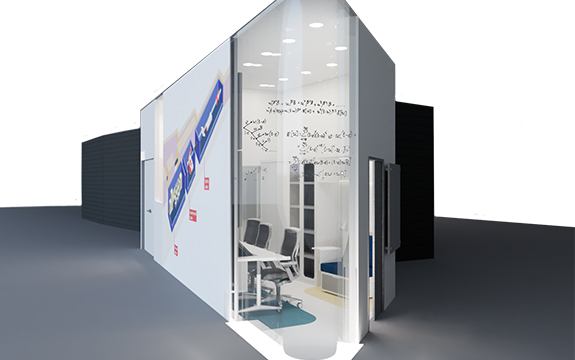
In Summary
- Design Factory Melbourne and ANSTO collaborate on design project
- New cabin designs improve safety, comfort and interaction
- Synchrotron scientists and engineers engaged in design process
In the first collaborative project following the signing of an MOU between Design Factory Melbourne (DFM) and Australian Nuclear Science and Technology Organisation (ANSTO), two honours students in the DFM global program have redesigned beamline user cabin spaces, used by scientists at the Australian Synchrotron.
The Australian Synchrotron produces powerful beams of light used at individual experimental facilities to examine the molecular and atomic details of materials. More than 5000 researchers a year use Synchrotron instruments. Each beamline requires a cabin space for scientists to operate the beamline, run their experiments, analyse data and prepare experimental samples. ANSTO plans to increase this capacity over the next eight years.
The DFM students were challenged to consider this expansion, and to design a new beamline user cabin. The new cabin designs will provide safety, comfort, interaction, reduce clutter and increase productivity for scientists. Students worked with Synchrotron scientists and engineers to understand the problems with existing cabins.
“The key challenge was to propose design solutions that were user-centric, fit for purpose and would accommodate different functions and stakeholder needs,” says Tiina Tuulos, Innovation Coach, Design Factory Melbourne.
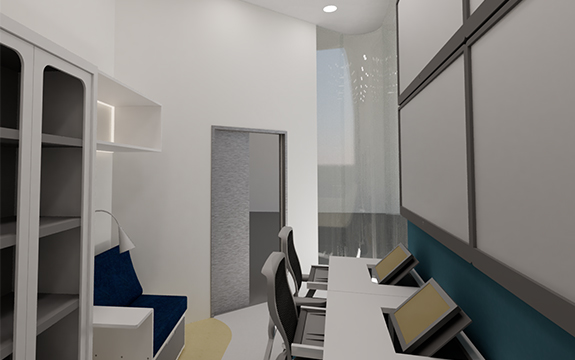
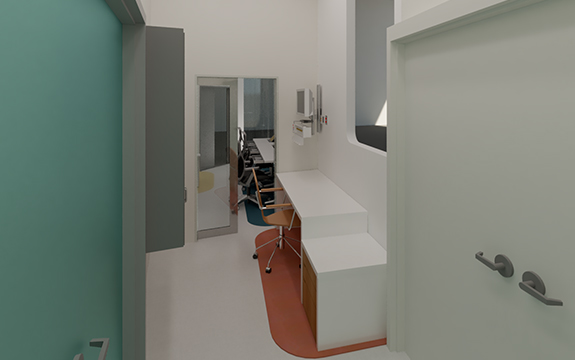
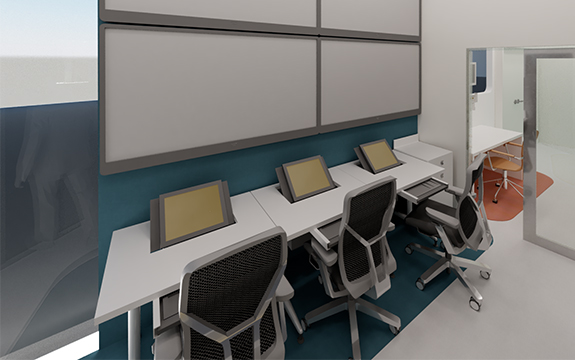
CODED beamline user cabin design concept illustrations showing interior layout with colour coding, by Jing Tan
DFM students, Melanie Phillips and Jing Tan, created proof-of-concept solutions and design demonstrator prototypes. CODED, by Tan, is a concept for improving workflow in a cabin. The design separates working spaces into colour coded areas; with sample, science and user areas in salmon, blue, and yellow respectively. Dedicated areas for belongings reduce clutter and improve access inside the cabin.
Curved structural glazing creates a feeling of spaciousness and gives scientists and engineers a sense of connection with the external world. Observers can see into the cabin without entering. Ambient lighting throughout, including the floor, reduces tripping hazards. Improved storage and writing surfaces have been created. Height adjustable furniture improves ergonomics and reduces fatigue. An embedded monitor is easily cleaned.
Axon by Phillips is a modular bench seat and central hub designed to positively influence the way people behave and interact in the cabins, creating an inviting communal seating area. It creates opportunities for interaction between researchers and supervisors while providing comfort, security and storage for belongings and reducing clutter.
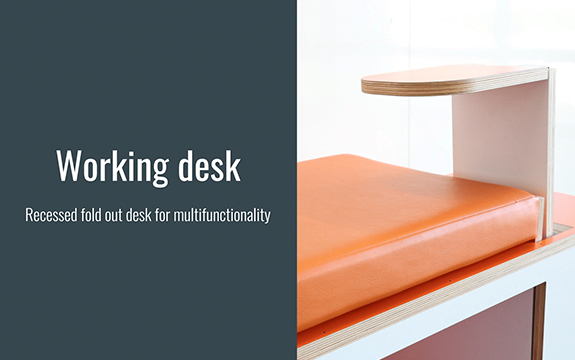
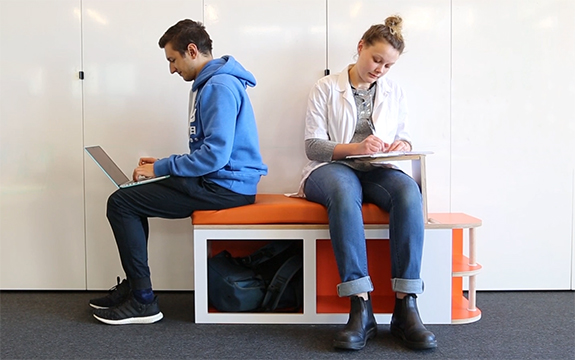
AXON modular bench seat design with desk, demonstrator prototype, by Melanie Phillips
“Synchrotron scientists and engineers were engaged in the design process through user interviews, observation and prototype testing. It’s an exciting first project in our partnership. We are planning our next collaboration with ANSTO Synchrotron,” explains Ms Tuulos.
The DFM ANSTO partnership draws inspiration from IdeaSquare, a Design Factory platform at CERN, that accelerates ideas through collaboration and experimental innovation. The intersection of design and science is one of DFM’s key strategic areas. DFM leads the global Challenge-Based Innovation (CBI) A3 program, that uses design innovation approaches to translate CERN science into products, services and systems that have impact on society beyond discoveries in particle physics. DFM continues to collaborate with ANSTO in establishing a Design Factory node within nandin, part of ANSTO’s Innovation Centre in Lucas Heights, NSW.

